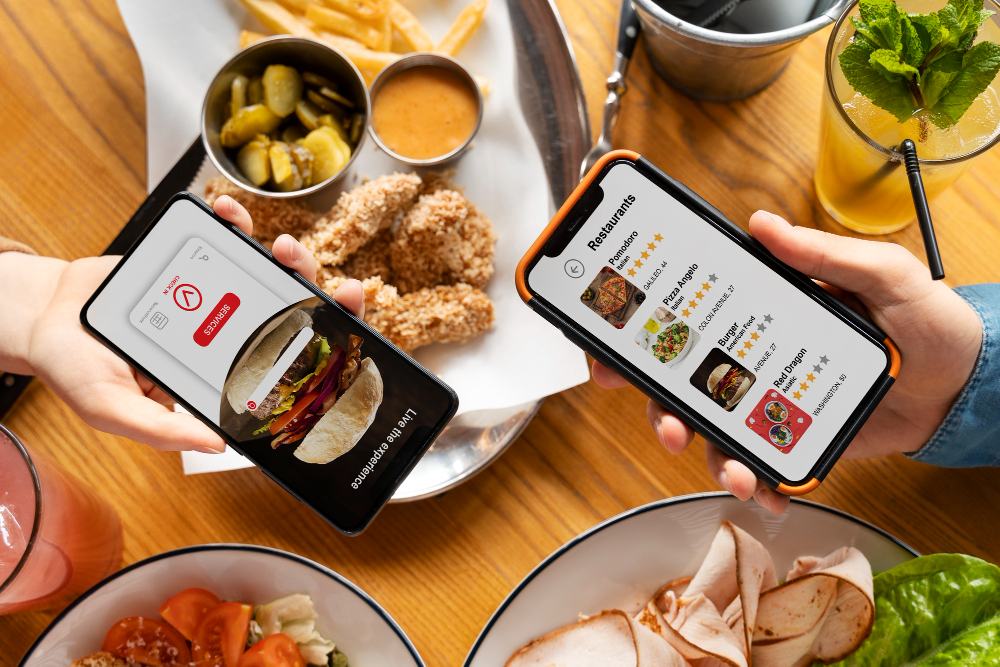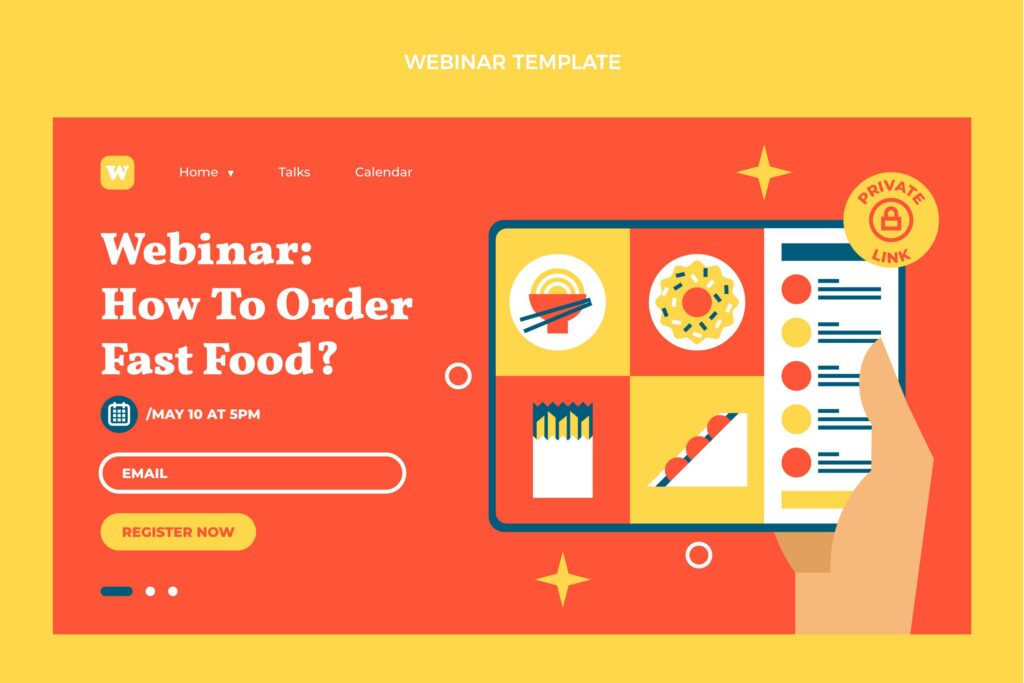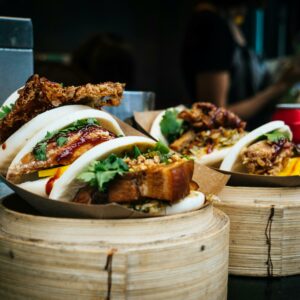How to Start a Virtual Restaurant from Home: Tips and Guide
By
Contents
As the demand for food delivery is increasing, have you ever dreamed of opening a restaurant, but the cost and logistics of a physical location seemed daunting? What if we told you that you could start a restaurant from the comfort of your own home, without the need for expensive real estate, renovations, or a large staff? Welcome to the world of virtual restaurants!
In this article, we’ll guide you step by step on how to start a virtual restaurant from home, offering expert ideas for small restaurant and key insights into setting up and running your own online food business.
What is a Virtual Restaurant?
A virtual restaurant, also known as a ghost kitchen or cloud kitchen, is a food business that operates solely through online ordering and delivery services. Unlike traditional restaurants, virtual restaurants do not have a physical storefront for customers to dine in. Instead, they focus on taking orders through delivery apps, their website, or other online platforms.
This model has surged in popularity, especially with the rise of food delivery services like UberEats, DoorDash, and Grubhub. Virtual restaurants can operate from home kitchens or shared kitchen spaces, allowing entrepreneurs to tap into the food industry without the overhead costs associated with a traditional restaurant setup. Read on to learn how to start a virtual restaurant with our detailed tips!

How to Start a Virtual Restaurant from Home: A Step-by-Step Guide
Starting a virtual restaurant from home takes several key steps. From creating a business plan to choosing the right kitchen setup, here’s what you need to do to get started:
1. Create a Food Business Blueprint
Just like any business, a solid business plan is the foundation of your virtual restaurant. Outline your goals, target market, budget, and menu. Will you offer pizza, burgers, vegan dishes, or something unique? Small restaurant design ideas should reflect your brand’s theme and cater to your target audience’s tastes.
Key elements to include:
- Target market: Are you focusing on busy professionals, families, or foodies?
- Menu development: Select dishes that are easy to prepare, travel well, and fit your niche.
- Pricing strategy: Keep in mind food costs, delivery fees, and profit margins.
2. Set Up a Home Kitchen or Commercial Kitchen
You’ll need a dedicated space to prepare food. If you plan to cook from home, ensure your kitchen complies with local health and safety regulations. Alternatively, consider renting a shared commercial kitchen space, which can be a more scalable option. This space should be equipped to handle the volume of orders you’ll be fulfilling.
3. Obtain Necessary Licenses and Permits
Even though your restaurant may not have a storefront, you will still need licenses and permits to operate legally. This typically includes food handling certifications, a business license, and possibly health inspections. Be sure to check with your local health department to comply with regulations in your area.
4. Create an Online Presence
For a virtual restaurant, your online presence is everything. Set up a professional website and register with food delivery platforms such as UberEats or DoorDash. You may also want to integrate an ordering system directly into your website to streamline the ordering process.
A strong online presence helps attract customers and build trust. Consider including customer reviews, menu photos, and your story behind the brand to establish a connection with your audience.
5. Design Your Menu and Optimize for Delivery
Choose menu items that are both delicious and delivery-friendly. Certain dishes hold up better during delivery, so consider how well your food will maintain quality from the kitchen to the customer’s door.
Tips for menu design:
- Focus on items that don’t lose flavor or texture when packaged for delivery.
- Keep your menu simple, offering a few specialty items to make your restaurant stand out.
- Use eco-friendly packaging options that align with your brand’s values.
6. Choose a Delivery Platform
To get your food into customers’ hands, you’ll need to partner with food delivery platforms such as Grubhub, UberEats, or DoorDash. These platforms help you reach a wide audience and handle order processing, payment, and logistics. You’ll need to decide whether to exclusively partner with one platform or spread your orders across multiple platforms to maximize exposure.
7. Marketing and Promotion
Since your restaurant won’t have foot traffic, you’ll need a robust marketing strategy to attract customers. Consider:
- Running online ads on social media (Facebook, Instagram).
- Offering promotions or discounts for first-time customers.
- Building a loyal customer base with loyalty programs or referral incentives.
8. Focus on Delivery and Customer Experience
Since the only interaction customers have with your restaurant is through delivery, ensuring a smooth and pleasant experience is vital. Pack food carefully in durable, eco-friendly containers to avoid spills or soggy food. Also, providing excellent customer service through timely deliveries and attentive communication can help build repeat customers.

What Fusenpack Can Do for Your Virtual Restaurant?
One of the most critical aspects of running a successful virtual restaurant is choosing the right custom food packaging. Especially for those virtual restaurants, people usually get impressed by what they first look at their food. Fusenpack offers a wide range of custom pizza boxes, take-out containers, and eco-friendly packaging solutions designed to keep your food fresh and your brand looking sharp.
Fusenpack’s packaging options are:
- Sustainable and Eco-friendly: Fusenpack offers biodegradable and recyclable packaging that aligns with your brand’s eco-conscious values.
- Customizable: You can easily add your restaurant’s logo and brand colors to create a memorable unboxing experience for customers.
- Durable and Secure: The packaging is designed to protect your food during delivery, ensuring it arrives fresh and presentable.

Starting your virtual restaurant with high-quality, custom packaging from Fusenpack can help you stand out and deliver a professional, branded experience to your customers.
Conclusion
Starting a virtual restaurant from home offers an exciting opportunity to tap into the growing food delivery industry. With the right planning, kitchen setup, and marketing strategy, you can learn how to start a virtual restaurant and create a profitable business. Choosing small restaurant ideas that are easy to prepare and deliver, and using top-notch custom printed food packaging will give your virtual restaurant the edge it needs to succeed.








